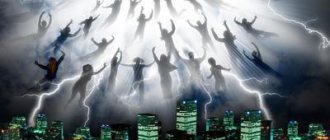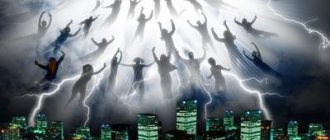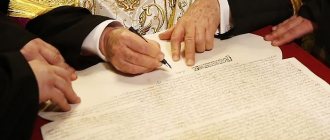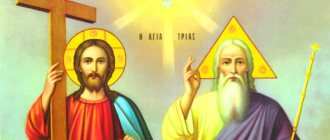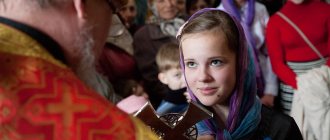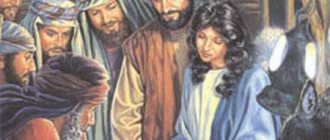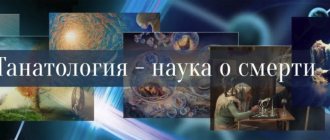Skeptical opinions
- A common option is for clergy to light the fire themselves. According to rumors, the patriarch smuggles a lighter;
- In the last century, Professor N. Uspensky concluded that in the Edicule, fire originates from a secret lamp. The glow becomes inconspicuous in the open space of the chapel;
- Supernumerary deacon A. Musin considers the event “a pious deception that spread massively during the period of stagnation in the 70s”;
- The Armenian Church denies the properties of the divine Radiance. It is claimed that candles are lit by a lamp that burns for 1500 years;
- In March 2021, the Armenian archimandrite gave a revealing interview. Agoyan said that there was nothing mysterious. The priest saw three times how bundles of wax candles were lit from an oil lamp.
Information about the descent
- The Church of Jerusalem, according to the testimony of the holy book, from the 5th century held services only after Evening Light;
- In the 9th century, pilgrim Bernard described the events of a morning church service. After the words: “Lord, have mercy,” a fire was lit in the lamps without outside help;
- Archbishop Nikita visited the Jerusalem church in 947. The cleric noted that the divine Radiance does not light up immediately, but at 6 o’clock in the evening after a prolonged prayer;
- In Russian, the miracle was first interpreted by Abbot Danil in the 12th century. People were standing in the open air, suddenly it began to rain, lightning flashed terribly. The parishioners were surprised that after the Holy Light the lamps were lit;
- In 1420, a representative of Sergievsky Posad was present during the invisible lighting of a lamp standing in the middle of the church;
- Hieromonk Hippolytus had a chance to see the heavenly light in 1708;
- Archbishop Gabriel shared his impressions of the Jerusalem church. The appearance of the patriarch with candles is a harbinger of a miracle. Blue heat flickered across the surface of the Holy Sepulcher on the marble.
Edicule
At twelve o'clock in the afternoon, a procession of the cross begins to stretch from the courtyard of the Jerusalem Patriarchate to the Holy Sepulcher. It is led by the patriarch: having walked around the Edicule three times, he stops in front of its doors.
“The Patriarch dresses in white robes. With him, 12 archimandrites and four deacons put on white vestments at the same time. Then clerics in white surplices with 12 banners depicting the passion of Christ and His glorious resurrection come out of the altar in pairs, followed by clerics with ripids and a life-giving cross, then 12 priests in pairs, then four deacons, also in pairs, with the last two of them in front of the patriarch they hold bunches of candles in their hands in a silver stand for the most convenient transmission of the holy fire to the people, and, finally, the patriarch with a staff in his right hand. With the blessing of the patriarch, the singers and all the clergy, singing: “Thy Resurrection, Christ the Savior, the angels sing in heaven, and grant us on earth to glorify You with a pure heart,” go from the Church of the Resurrection to the edicule and circle it three times. After the third circumambulation, the patriarch, clergy and singers stop with the banner bearers and the crusader in front of the holy life-giving tomb and sing the evening hymn: “Quiet Light,” recalling that this litany was once part of the rite of the evening service.”
Fire under the Latin Patriarch and a crack in the column
In 1578, clergy from Armenia, who had not heard anything about the attempts of their predecessor, tried to repeat them. They obtained permission to become the first to see the Holy Fire, prohibiting the Orthodox Patriarch from entering the church. He, along with other priests, was forced to pray at the gate on Easter Eve. The minions of the Armenian Church never managed to see the miracle of God. One of the columns of the courtyard, in which the Orthodox prayed, cracked, and a pillar of fire emerged from it. Traces of its descent can still be observed by any tourist today. Believers traditionally leave notes in it with their most cherished requests to God.
Catholics do not recognize the Holy Fire
Some believe that God's radiance is recognized only by the Orthodox, but this was not always the case. Until the 11th century, Catholic and Christian representatives led the Easter service together, watching the descent of the flames. There was no division between the Eastern and Western churches at that time; everyone considered the Holy Fire a miracle.
In 1099, the Church of the Holy Sepulcher was conquered by the Crusaders, and the building came under the control of Catholics. In 1187, they were expelled from Jerusalem, imposing a ban on visiting the Edicule and other holy places. From that moment until today, Catholicism has not participated in the descent of the Holy Light. 50 years later, Pope Gregory IX spoke out against considering the phenomenon a miracle.
